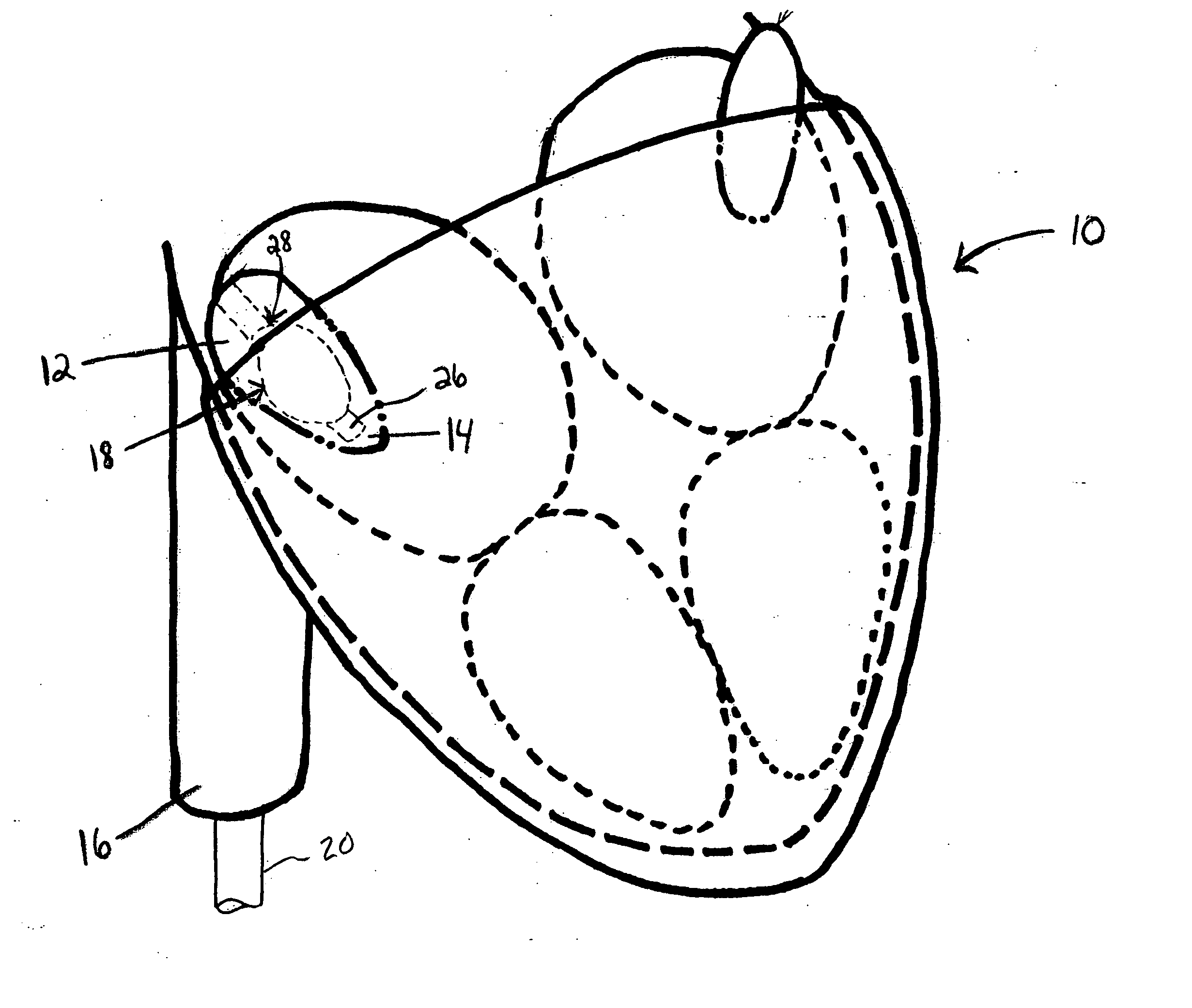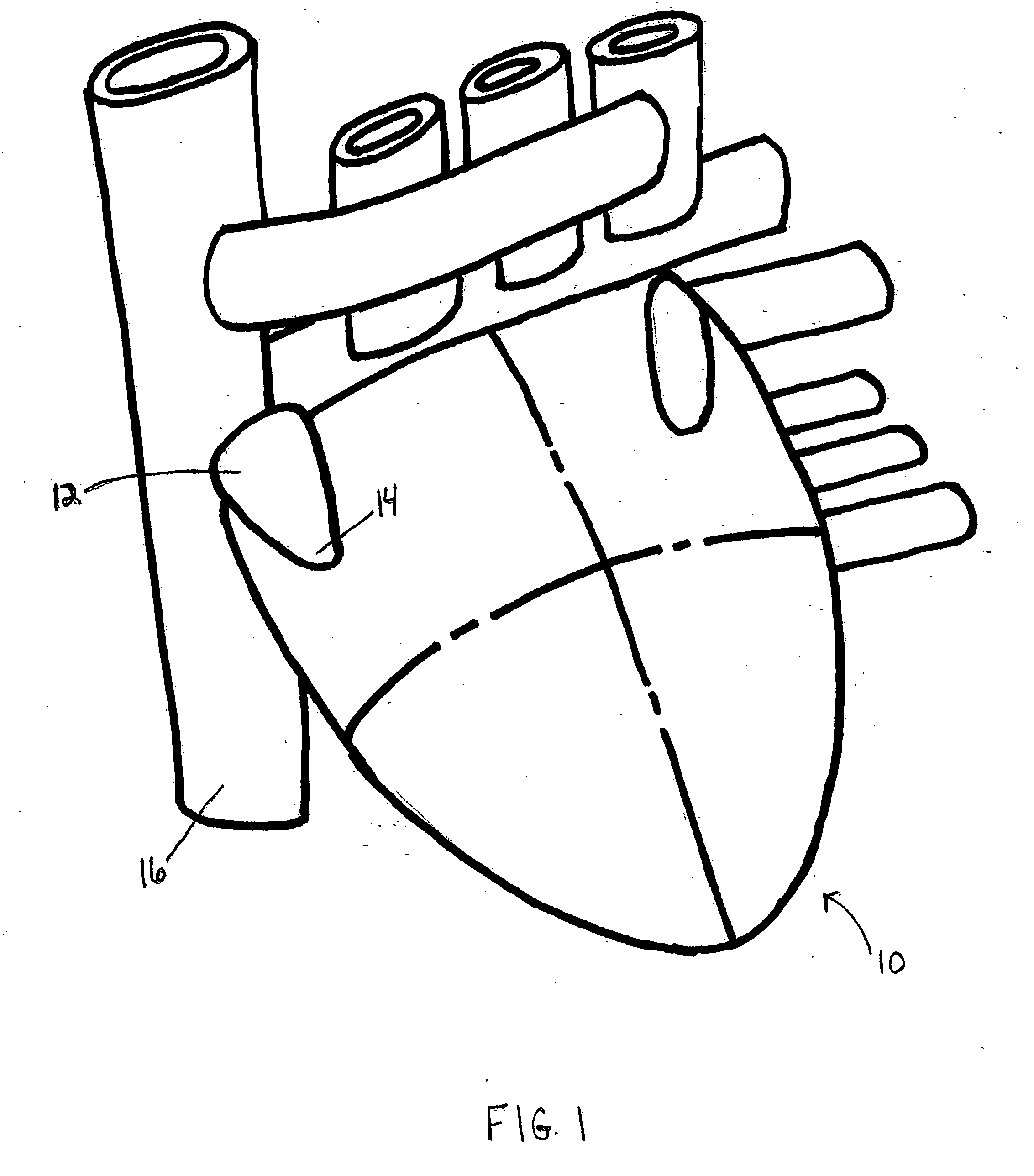Devices and methods for access through a tissue wall
a tissue wall and access device technology, applied in the field of pericardial space access devices, can solve the problems of mixing pericardial fluid from the pericardial space with blood in the right atrial appendage, the risk of puncturing the right atrium wall or pericardial sack with the catheter, and the confined area that is difficult to access
- Summary
- Abstract
- Description
- Claims
- Application Information
AI Technical Summary
Benefits of technology
Problems solved by technology
Method used
Image
Examples
Embodiment Construction
[0024] The present invention is a method and apparatus for accessing the pericardial space via the right atrial appendage. FIG. 1 is a diagrammatic view of a human heart 10. The right atrial appendage 12 is a thin-walled, low pressure, ear-like lobe that can be readily accessed via the inferior vena cava 16 by way of the femoral vein (not shown). The right atrial appendage 12 is shaped such that it forms an apex 14 at one of its ends. The right atrial appendage 12 is a known entry site into the pericardial space (not shown) for the treatment of a variety of cardiac conditions.
[0025]FIGS. 2 and 3 are, respectively, side and cross-sectional views of an end portion of a steerable balloon catheter 18 known in the art for introducing and guiding a working catheter through the coronary vasculature. The balloon catheter 18 includes an elongated body 20, a central lumen 22 extending along the body 20, an inflation lumen extending along the body 20, an inflatable balloon 24, and a distal ti...
PUM
 Login to View More
Login to View More Abstract
Description
Claims
Application Information
 Login to View More
Login to View More - R&D
- Intellectual Property
- Life Sciences
- Materials
- Tech Scout
- Unparalleled Data Quality
- Higher Quality Content
- 60% Fewer Hallucinations
Browse by: Latest US Patents, China's latest patents, Technical Efficacy Thesaurus, Application Domain, Technology Topic, Popular Technical Reports.
© 2025 PatSnap. All rights reserved.Legal|Privacy policy|Modern Slavery Act Transparency Statement|Sitemap|About US| Contact US: help@patsnap.com



